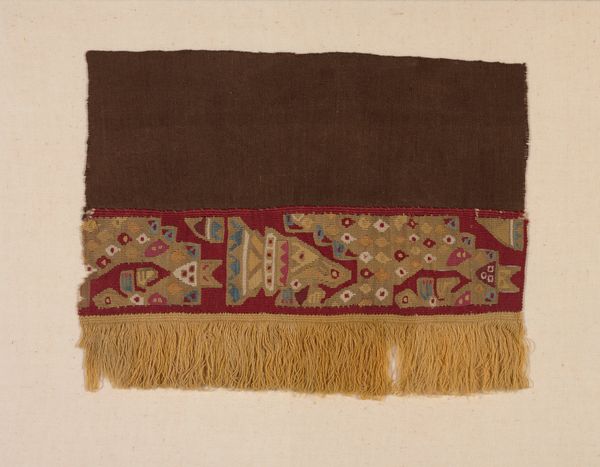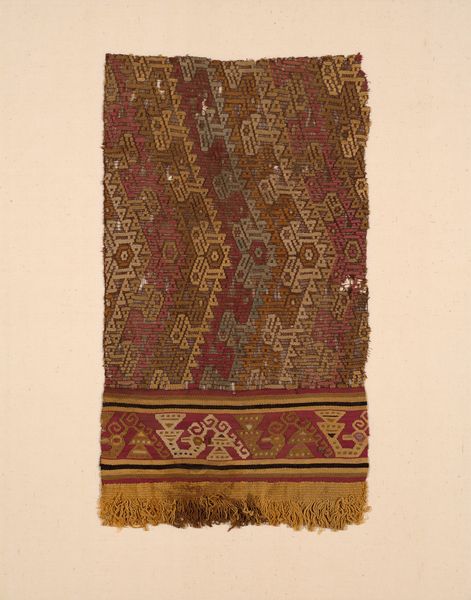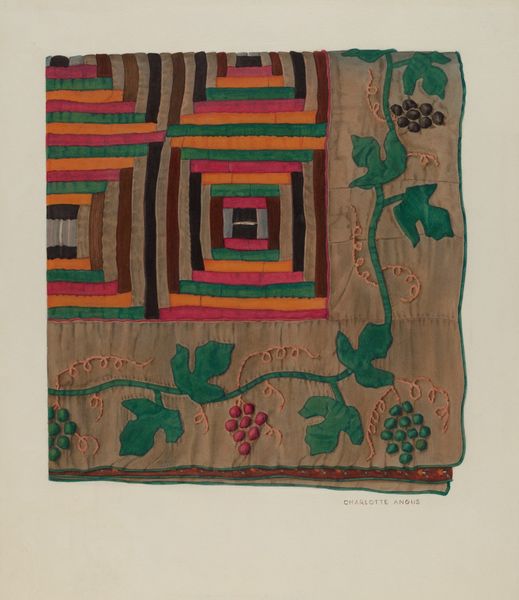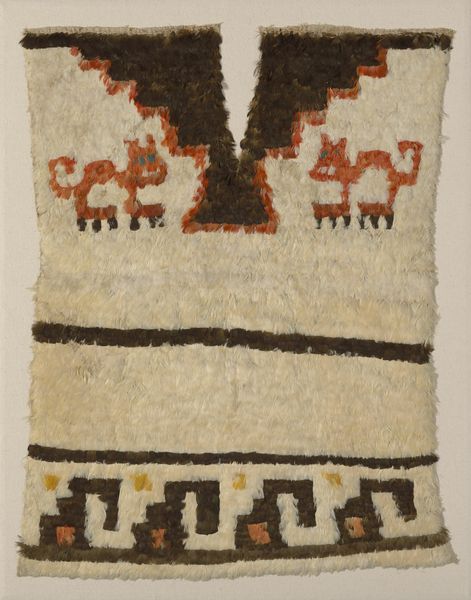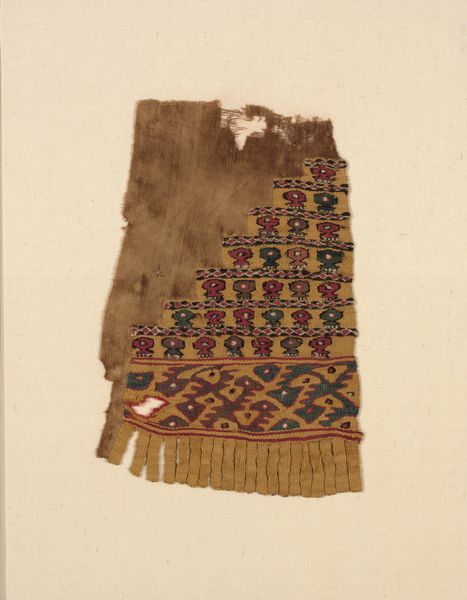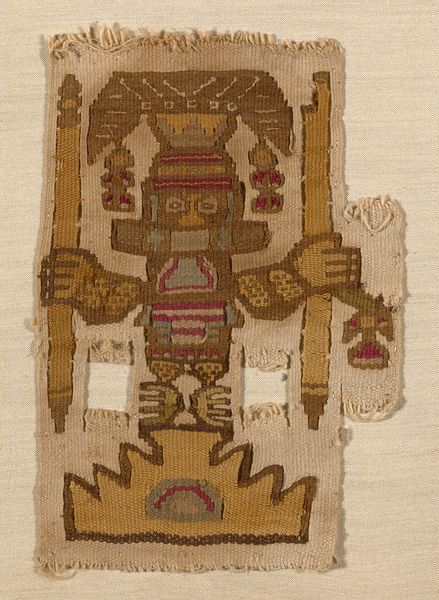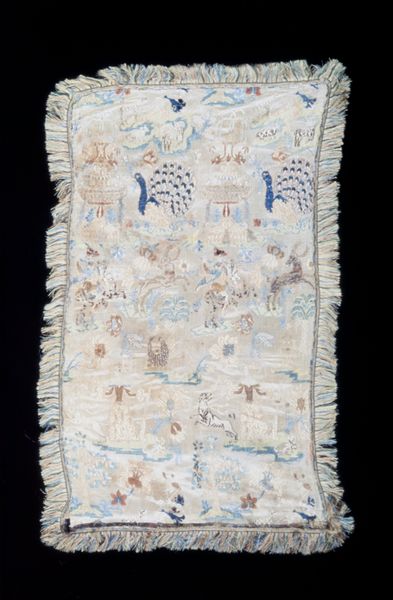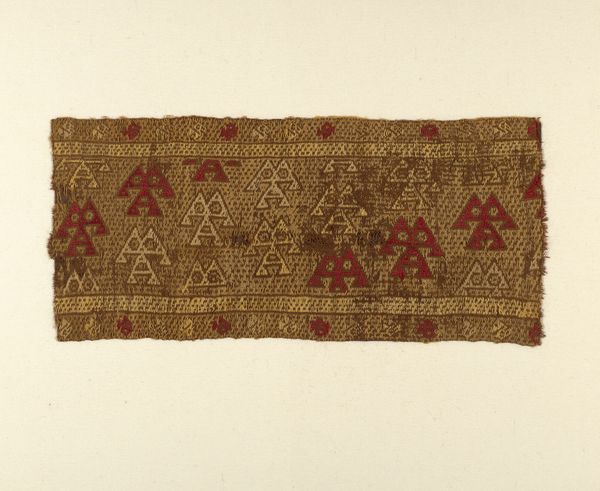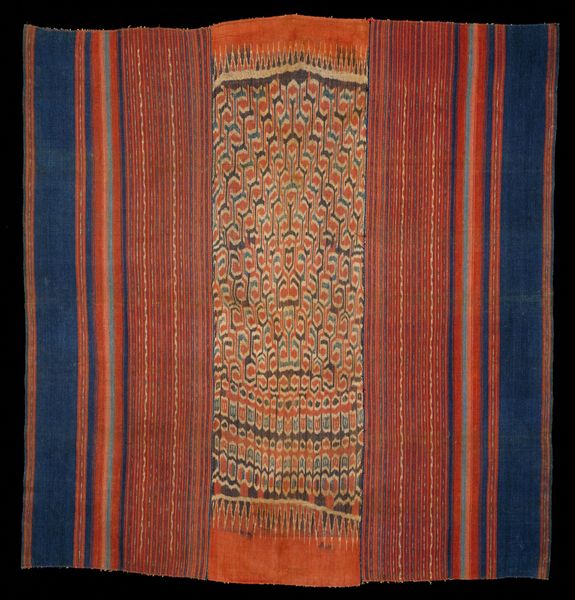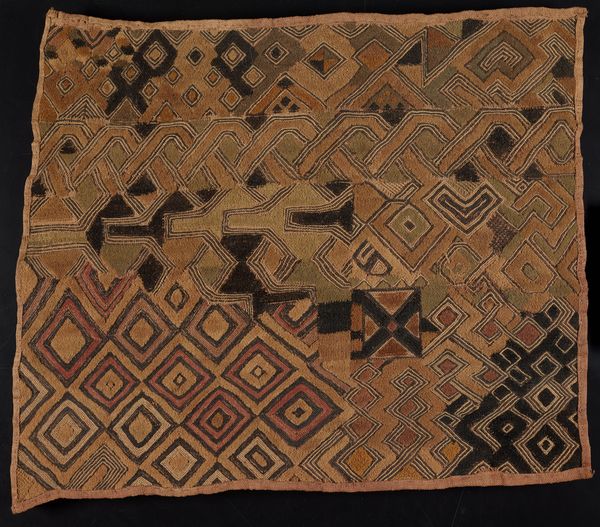
fibre-art, weaving, textile
#
fibre-art
#
weaving
#
textile
#
figuration
#
indigenous-americas
Dimensions: 27.3 × 15.2 cm (10 3/4 × 6 in.)
Copyright: Public Domain
Curator: Looking at this woven fragment, there's a somber, almost ethereal quality to its surviving elements. Editor: Yes, it does carry a particular presence. We know this textile comes from the Lambayeque culture, a Pre-Columbian civilization along the northern coast of modern-day Peru, with this piece likely created sometime between 1000 and 1476. The Art Institute of Chicago aptly calls it "Fragment," leaving its complete story tantalizingly incomplete. Curator: Right. As a fragment, its vulnerability and strength intertwine. Notice how the warp and weft visually depict what seems to be a ceremonial figure standing above smaller individuals, or perhaps offering something. Are those bird-like figures in tow? It’s striking how art visualizes social roles, power dynamics and the relation between humankind and nature. The condition of it speaks of the vulnerability of indigenous knowledge and traditions, and also of their defiance. Editor: I agree. Textiles such as this played crucial roles in Lambayeque society. The ruling elites probably commissioned specialized artisans who worked primarily with cotton and alpaca wool, weaving elaborate scenes like this one to reinforce social hierarchies, legitimize authority and broadcast Lambayeque cosmology. Curator: Indeed, each symbol would have possessed significance, resonating with deep-seated cultural meanings now largely lost to time. Considering what it may have represented, its survival seems remarkable. The degradation could even underscore a shift in power as these indigenous practices fade. How interesting is that an old piece like this still talks to contemporary gender studies and theories of race? Editor: The visual rhetoric and the symbolic charge embedded in these works undoubtedly provided a sense of order and continuity within a society undergoing significant socio-political changes and facing existential threats. By understanding that function, we begin to appreciate its role in identity formation as well. Curator: I hadn't quite framed it that way. This little snippet speaks of a culture's profound creativity and resilient self-representation even while facing a kind of disintegration through colonial power. Editor: And the fact that we can examine it now, centuries later, sparks conversations across disciplines. That continuing conversation helps broaden our own perspectives.
Comments
No comments
Be the first to comment and join the conversation on the ultimate creative platform.
